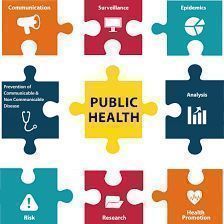
Tms One More Tool Against Parkinson’s and Alzheimer’s
Tms One More Tool Against Parkinson’s and Alzheimer’s
“ 35-40% of patients with Parkinson ’s Suffers from depression. A disorder that, in These People, Has a Double Causes: A Reactive Basis (Emotional and Psychological Reaction to the Diagnosis), and Organic Basis (The Loss of Dopamine, Characteristic of this Disease, affects Brain Regions Connected with the Regulation of Mood, Therefore with Emotionality). A Major Challenge in the Treatment of Depression in Patients With Parkinson ’S Disease is the onset of Side Effects With Common Antidepressant Drugs, Because they are very of contraindicated when taken at the same time as some dopaminergic drugs.
In addition, Therapeutic Response of Parkinsonian patients with depression is not always optimal. StTranscranial Magnetic Stimulation (TMS) fits in as a nonpharmacological adjuvant treatment that can act on the dysfunctional brain areas that underlie depressive symptoms and has shown therapeutic efficacy”. Illustrating the potential of TMS in treating Parkinson’s disease, and neurodegenerative disorders in general, is Graziella Madeo, neurologist and director of the Brain Clinical Center’s Neuromodulation and Clinical Research Unit&Care and scientific co-chair of the Residential and Live streaming CME Course on ‘The’integrated clinical approach and TMS in neurology and psychiatry’, sponsored by LetscomE3 in collaboration with Brain&Care, underway today in Rimini, Italy.
TMS and neurodegenerative diseases
Known since 1985, in The Last Two Decades ’ Tms is offering New Therapeutic Perspectives in the Field of Pathologies Caused by Progressive and Irreversible Loss of Nerve Cells. “ UNFORTUNATELY, TO DATE, WE DO NOT HAVE RESOLVING THERAPES, IN THE SENSE THAT DRUGS DO NOT BLOCK THE PROCESS THAT LEADS Cells to Die. For this Reason, Research and Clinics are moving Toward Methods that can Control and Slow Down The Syptoms of These Diseases- Emphasizes the Specialist-Improving the Quality of Life of Patients. Tms Stands Precisely in this Perspective, as an Adjuvant Tool for Almedy Existing Therapies, Including in The Field of the Most Widespread Neurodegenerative Diseases, Parkinson ”s and Alzheimer ”s;.
The Disease of Alzheimer’s can affect at least the 5% of people with Over 60 Years of Age, and it is estimated that there are 500 thousand sufferers in Italy. A Number That Experts Say Could Triple by 2050. Parkinson’s Disease is the Second Most Common Neurodegenerative Disease, Striking in AdultHood, but there are many casees befer age 40.
Data on the ’ Incident Report 12 Cases per 100,000 populations.
Tms and Parkinson’s Disease
Tea Parkinson ’ S Disease it is known as a ‘ Movement Disease ’ ;: Sympoms includes Resting Tremor, Rigideity, Bradykinesia (Slowness of Movements ed.) and postural unstability. But it is actually a Much More Complex and Various Disease, Also Characterized by Non-Motor Symptoms (Depression, Anxiety, Cognitive Disorders and Pain) That can precedes Motor Ones by Years. “ When We Talk About the ’ Application of Transcranial Magnetic Stimulation, it is important to distinguish, then, between what we can do for the motor expectation and what, on the other hand, we can do for the non- Motor part ” ;, Madeo Emphasizes.
It is very important to to Work Alongside The Different Treatment Protocols: Existing Therapies, Which Are Not Only Drug Therapies, Neuromotor Rehabilitation and TMS. Outcomes Improve with the ’ Integrated approach. “ Magnetic Stimulation Acts On Synaptic Plasticity, Which is the basis of our learning and recovery. By Combbing It With Continuous Motor Relearning, The Effects Will Be More Consistent and Noticeable. Studies Show, in fact, that stimulation of Areas Related to Cognitive Control of Movement Improves Sympetoms of Rigide and Bradykinesia and Has Positive Effects on a Gait Phenomenon Called ‘ Freezing of Walking ’.
We Talk About the Difficulty Many Patient Experience in Taking The First Step Despite Their intention to Walk, on which dopaminergic therapy is not always effects ” Recalls Madeo. The Benefits of Tms “ Remain One Month After The End of Treatment, but Since Parkinson’s is a Chronic and Progressive Disease It is Advisable to do Maintenance Cycles ”.
LTms and Alzheimer’s Disease
“ in the case of Alzheimer’s Disease-Explains the Specialist- there is a degeneration of the temporo-parietal Areas, where our memory is located. When the Disease Progressives It Can Affect Other Brain Areas and Causes Additional Sympetoms. TMS FIRST Fits in At Early Stage, where the Brain Still Has Resources and Where there are ares that we can stimulate for the Recovery of Function O The ’ Activation of a Aki Actual, Replacping the brain area that no long functions well Well.
Recent studies have clarified that stimulating in the Early Stages of the Disease a Region of the Brain Called the Pre-Cuneus Results in Improved episodic and Short-Terre Memory Functions ”.
COme TMS WORCS
Transcranial Magnetic Stimulation, in Italian Transcranial Magnetic Stimulation, is a Noninvasive Method of Remodulating Brain ’ Activity. “ This Technique Unes Magnetic Pulses that are sent Through a coil resting on the head. There stimulation crosses the bones Of the Skull and Reaches the nerve cells. Depending on the High or Low Frequency with Which We Send These Impulses, We stimulate or inhbit the ’ Activity of Neurons ”.
POtteniality and Limitions of TMS
Tms is an adjuvant therapy that opens up new and promising prospects for use, but with some limitations “ we need more and more scientific evidence to support this tool, expedally with regard to long-term effects and the application of standardized stimulation protocols commons to different Research and Clinical Groups. Since this is an adjuvant Treatment, Which Does Not Have The Side Effects Typical of Drug Therapies-Dr. Madeo Concludes-Tms Must Be a Tool Weighted According to Clinical and Diagnostic Evaluation by the Neurologist ”.

